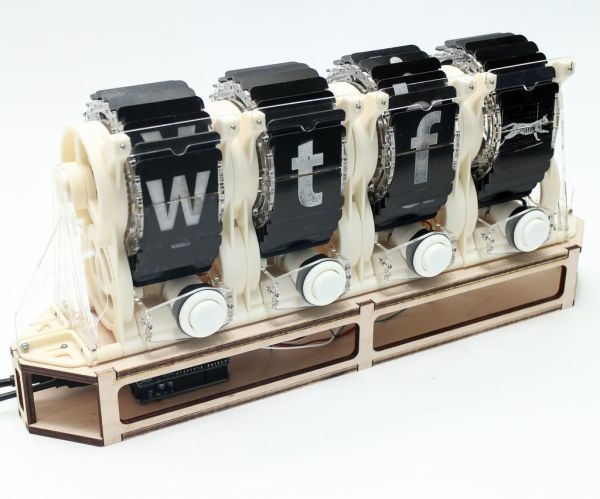The Internet of Things is garbage. While the most visible implementations of the Internet of Things are smart lights that stop working because the company responsible for them folded, or smart thermostats that stop working because providing lifetime support wasn’t profitable, IoT could actually be useful, albeit in devices less glamorous than a smart toaster. Smart meters are a great idea, and so is smart trash. That’s what [mikrotron] and company are entering into the Hackaday Prize – smart trash cans – and it’s not as dumb as spending $40 on a light bulb.
The idea behind the Internet of Trash is to collect data on how full a trashcan is, and publish that data to the Internet. This information will be used by a city’s trash collectors and recycling agencies to know when it’s time to collect the garbage.
The hardware for the Internet of Garbage needs to know how full a can is, and for that the team has turned to an ultrasonic sensor pointed down into the garbage. The amount of trash in a can is pinged once a day, and the information is sent over the Internet via a GSM network. Additionally, the GPS coordinates and a unique ID are delivered to the server, with everything ultimately powered by a solar panel.
The future of the Internet of Things isn’t putting Twitter in a coffee maker, it’s all about infrastructure, whether that’s power, solar freakin’ roadways, or the trash. We’re glad to see a useful application of a billion smart things, and the Internet of Trash makes for a great Hackaday Prize entry.













 In a good-ol’ engineers-for-engineers fashion, I’m doing something a little different for this post: I’m finishing off this series with a set of assembly videos, a BOM, and the original CAD files to make that beast on the front page come to life. As for why, I figured: why not? Even though these mechanisms have lived in the robotics community and film industry for years, they’re still lacking the treatment of a solid, open design. This is my first shot at closing that gap. Get yourself a cup of coffee. I’m about to give you every bleeding detail on the-how-and-why behind these beasts.
In a good-ol’ engineers-for-engineers fashion, I’m doing something a little different for this post: I’m finishing off this series with a set of assembly videos, a BOM, and the original CAD files to make that beast on the front page come to life. As for why, I figured: why not? Even though these mechanisms have lived in the robotics community and film industry for years, they’re still lacking the treatment of a solid, open design. This is my first shot at closing that gap. Get yourself a cup of coffee. I’m about to give you every bleeding detail on the-how-and-why behind these beasts.







